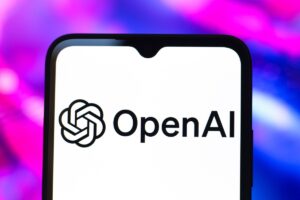The ChatGPT Dilemma

OpenAI’s Social Network: An Intriguing Yet Controversial Idea
The Concept Behind OpenAI’s Social Network
Recently, reports emerged that OpenAI is contemplating the development of a social network to rival established platforms like Meta and X. While this idea aims to leverage user-generated data, there’s ongoing skepticism about its viability. The main premise is straightforward: companies depend heavily on data to enhance their generative AI products, and a social network could provide a convenient source of such data.
However, the social media landscape has dramatically changed over the years, and many argue that launching a new platform might not be as beneficial as it sounds. The allure of creating an OpenAI-centric social space is evident, but it raises questions about the alignment of this mission with the company’s broader goals of developing artificial general intelligence (AGI).
The Misalignment of Values
OpenAI was originally conceived as a nonprofit focused on benefiting humanity without the constraints of profit generation. The potential venture into social media appears out of sync with this mission—especially since social media is often criticized for its role in data exploitation and negative societal impacts. As such, the idea seems to conflict with OpenAI’s image as a pioneer in ethical AI development.
Insights from Experts
To delve deeper into this subject, Damon Beres from The Atlantic spoke with tech expert Charlie Warzel. Warzel expressed concern that the concept of an OpenAI social network resembles strategies from companies like Meta, which have often resulted in mediocre innovations. He characterized this initiative as possibly lacking the visionary spirit that initially defined OpenAI’s mission.
The Logic Behind the Social Network
- Data Collection: Every post on social media produces a wealth of data. For AI companies such as OpenAI, having access to substantial data sets is crucial for training their models.
- User Engagement: A diverse user base could create a captive audience, making it less likely for them to explore rival products from other AI companies.
Despite these theoretical benefits, Warzel pointed out that trying to artificially create an online community might result in failure, as such efforts have typically been met with skepticism.
Understanding Market Dynamics
The current need for a new social network is questionable. The existing platforms have invested significant resources into their development. Companies like Meta and YouTube have years of experience and established users, making it a daunting task for new entrants like OpenAI to carve out their niche.
- User Fragmentation: Recent upheavals—including Elon Musk’s acquisition of X and the emergence of alternatives like Bluesky and Threads—have splintered user bases across various platforms. New entrants often only appeal to specific, niche audiences rather than a broad spectrum.
OpenAI’s Broader Vision
Should OpenAI move forward with this initiative, it may be an attempt to turn ChatGPT into a more comprehensive platform that could dictate how people interact with information online. By fostering real-time conversations around news and culture, OpenAI might hope to position itself as an essential layer on the internet.
Yet, many analysts, including Warzel, argue that this pivot could distract the company from its original ambitions. The overwhelming success of ChatGPT was not anticipated; it was meant as a proof of concept. Now, OpenAI might find itself in a position where it needs to constantly innovate to maintain user engagement.
- Innovation Pressure: The success of ChatGPT demands more from OpenAI. After demonstrating that their product works, there is pressure to keep growing and identify new user engagement avenues.
Future Product Launches
In addition to the discussed social network, OpenAI has recently released new models—named o3 and o4-mini—claiming them to be among their smartest to date. While excitement surrounds these updates, questions linger about their practical impact, especially in scientific research.
Overall, as OpenAI navigates the ever-evolving landscape of technology and user interaction, the direction it takes remains crucial. The pursuit of AGI continues to lead the narrative, yet the exploration of social networks introduces a complex layer of considerations that could redefine the company’s future.





